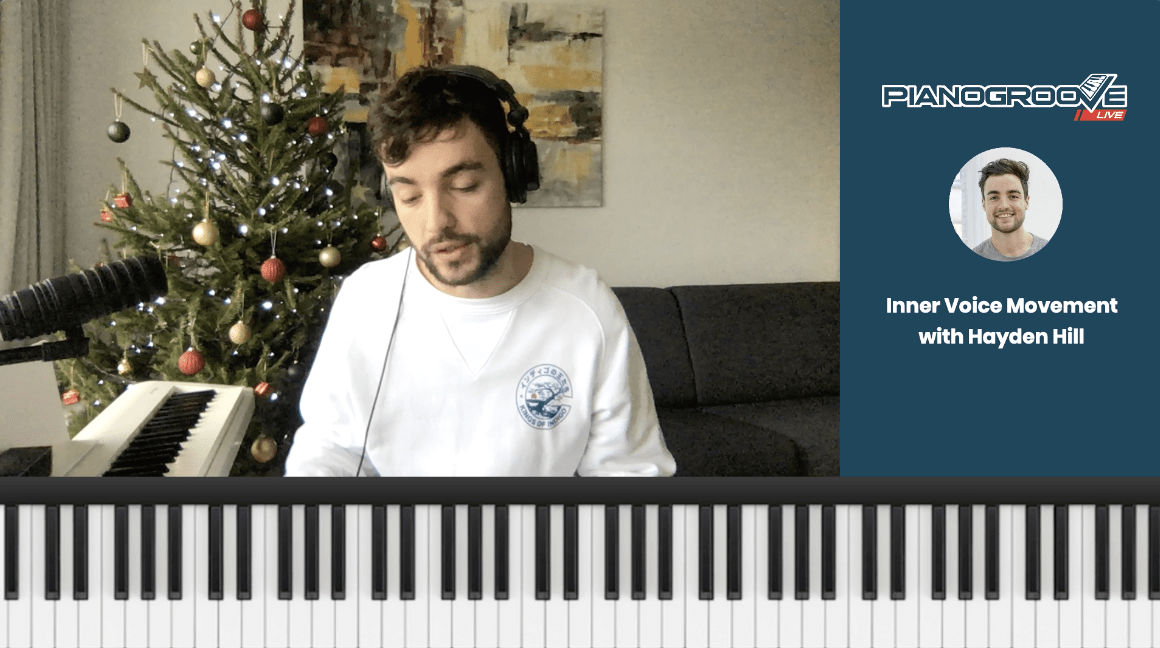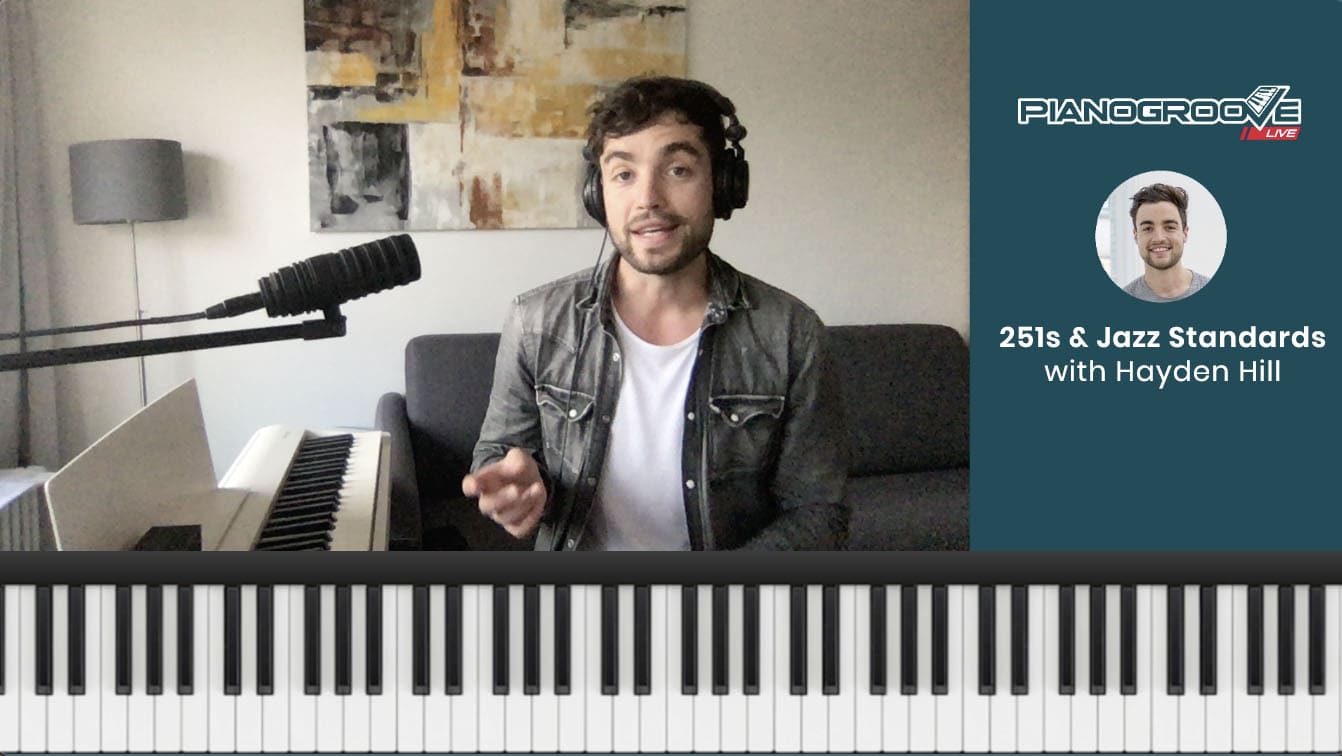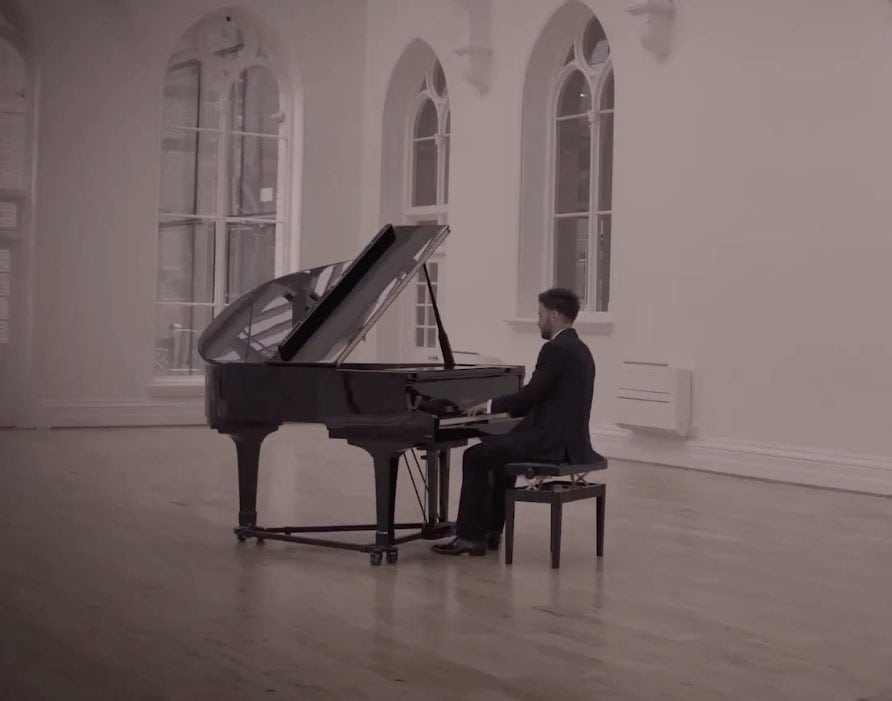

Hayden Hill
Hayden founded PianoGroove in 2015 with the goal of making the world a more musical place. He shares his love for jazz piano through his online courses and manages the community area of PianoGroove.
December 9 · 2020
Ask Question
Live Seminar Resources
Live Seminar Resources
PDF Downloads
- Seminar Notation
Join PianoGroove Pro to access all downloads and learning resources.
Download theory supplements, midi files, chord changes and full note-for-note transcriptions of every lesson.
Related Lessons
Forum Threads
Seminar Description
Seminar Description
In this live seminar Hayden explains the concept of inner voice movement. This simple but effective technique can be used to add depth and interest to our chords, progressions, and arrangements. We work through major, minor, and dominant chords and then apply to some famous jazz standards.
Comments
6 Comments
Leave Comment
Show All Comments





Hayden…just love these sessions…they turn the 5 minute Master Classes into Master Sessions! Great work!
Hey Celia 👋🏻
I’m glad you enjoyed the session. It’s a fun topic to plan and present.
Let me know if you have any ideas for future seminar topics. I was thinking my next seminar could be an “Ask Me Anything” format to start the new year and help students with any questions they may have.
Cheers, Hayden
@Hi Hayden
This is such a great live session, my vocing confusion is getting out of the cloud slowley and step by step. You have done a great work, and I think your teaching methodology and explanations of complex topics are amazing. A real strength.
Keep going.
Thanks Prisca – it’s great to hear your comments.
Inner voice movement is a lovely area to study and something that I have a lot of fun with.
I’m looking forward to my next live seminar later this month. If you have any topics that you would like me to cover just let me know.
Cheers! Hayden
Hi, I find this extremely interesting to start to work on systematically! Is it possible that you Hayden could make a cheat sheet with the suggestions for inner voice movement that you mention in the seminar, and possibly other possibilities also? If there isn’t a document already somewhere, but i don’t find any?
And a more specific question, why do one speak of only 3 minor chords, for example Cmmaj7, Cm7 and Cm6? Why not Cmb6 also? You could for instance then easily and logically connect it in a minor 251, where the b6 in the minor tonic chord would become the b5 in the 2 and the b2 in the dominant chord?
Hi Fredrik.
Yes I can certainly create a cheat sheet for this – leave that with me. In fact I have created a new course which covers different inner voice options over dominant chords. The course will be launched early next week so keep your eyes pealed in the forum.
For your second question, there are a potentially infinite number of ways to add inner voices and connect our chords. The Cmmaj7, Cm7, to Cm6 example if one of the easiest to visualise and also one of the most practical in terms of when and where it can be applied. I would recommend mastering this movement in all 12 keys so that it can be easy visualised, and then explore additional inner voices like the one you mention here.
Let me know if I can help further and look out for my new course next week.
Cheers, Hayden